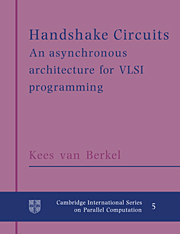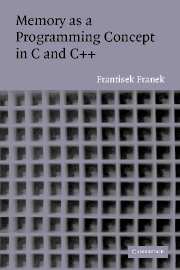Handshake Circuits
'Design by programming' has proved very successful in the development of complex software systems. This book describes the construction of programs for VLSI digital circuit design, using the language Tangram, and shows how they can be compiled automatically in fully asynchronous circuits. Handshake circuits were invented by the author to separate questions involving the efficient implementation of the VLSI circuits from issues arising in their design. Dr van Berkel presents a mathematical theory of handshake circuits and a silicon compiler supported by a correctness proof. The treatment of VLSI realizations of handshake circuits includes various forms of optimization, handshake refinement, message encoding, circuit initialization, and testing. The approach is illustrated with a host of examples drawn from a wide range of application areas. The book will be of use to electrical engineers and computer scientists involved in VLSI design.
- First integrated account
- Foreword by Martin Rem
- Author gave a tutorial on this at Banff meeting, Aug 1993
Product details
April 2011Adobe eBook Reader
9780511254642
0 pages
0kg
52 b/w illus. 10 tables
This ISBN is for an eBook version which is distributed on our behalf by a third party.
Table of Contents
- Foreword
- Preface
- Introduction
- 1. Introduction to Tangram and handshake circuits
- 2. Examples of VLSI programs
- 3. Handshake processes
- 4. Handshake circuits
- 5. Sequential handshake processes
- 6. Tangram
- 7. Tangram – VSLI circuits
- 8. Handshake circuits – VLSI circuits
- 9. In practice
- A. Delay insensitivity
- B. Failure semantics
- Bibliography
- Glossary of symbols
- Index.




